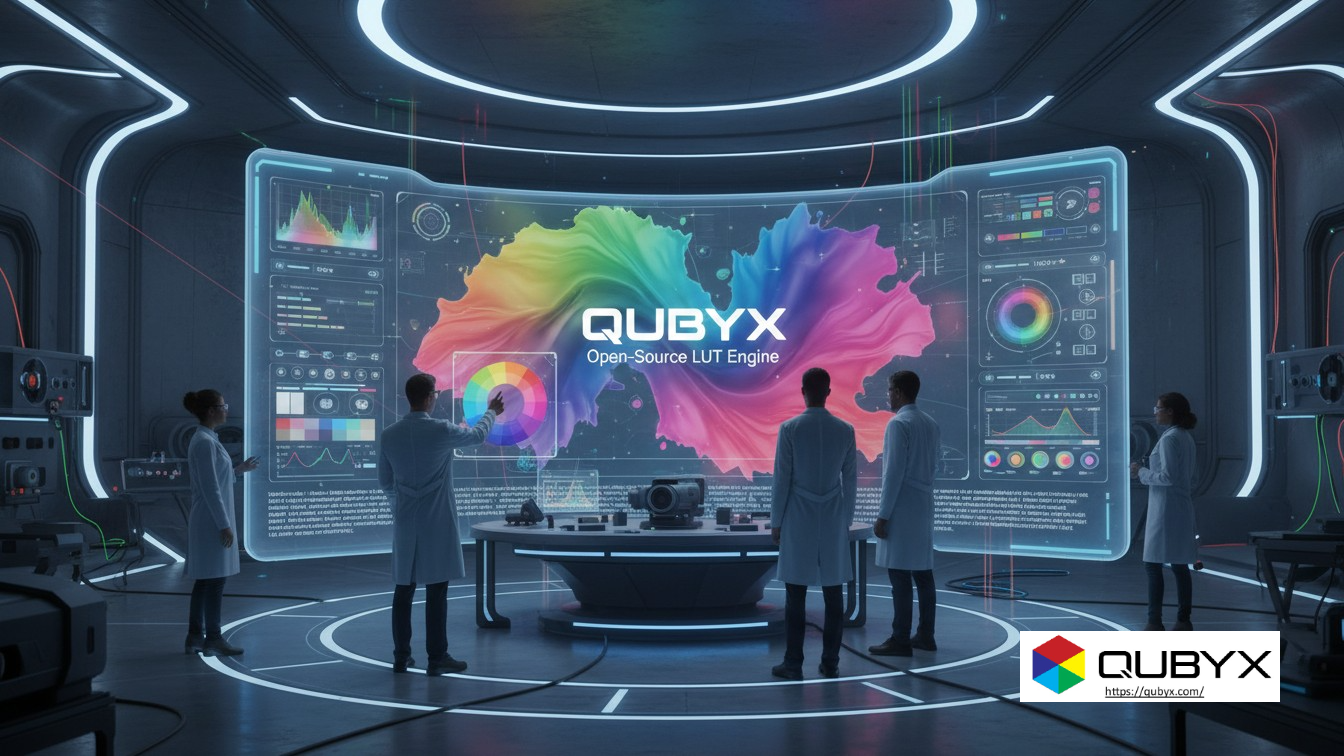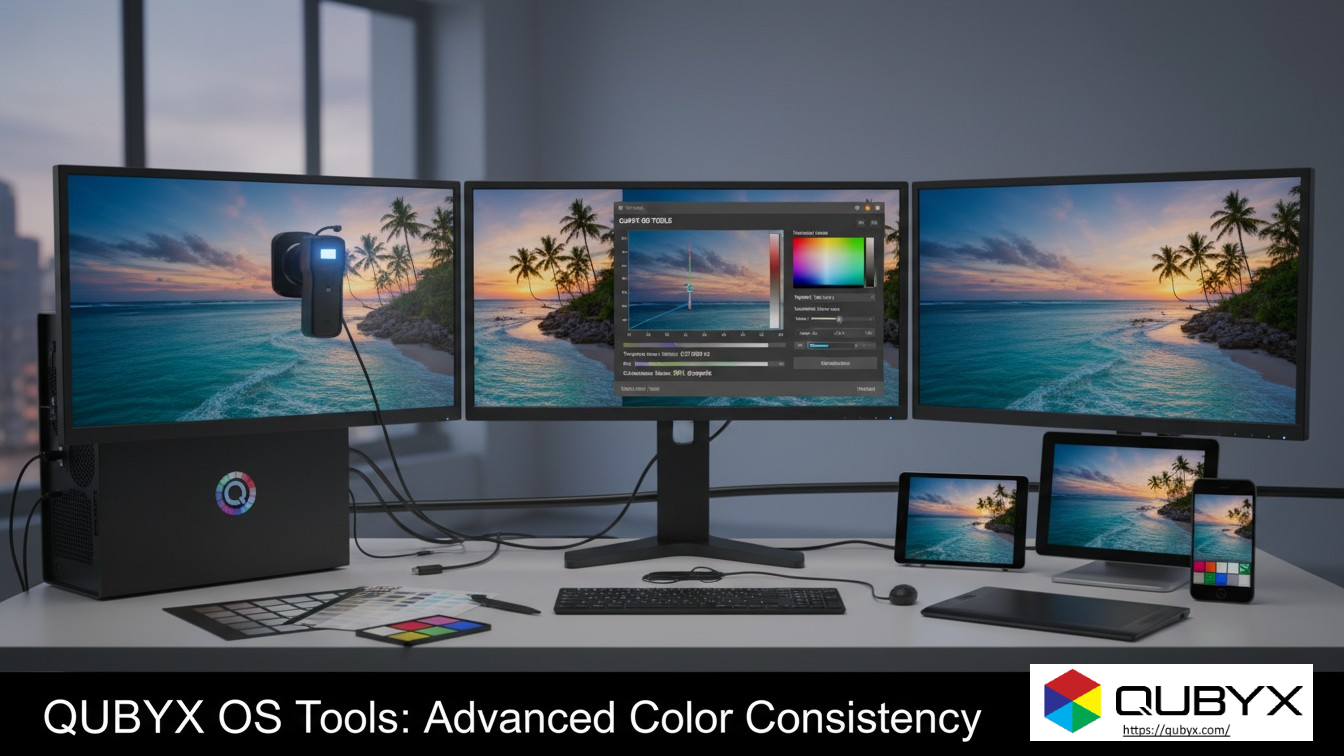News
- Home
- Medical Display Calibration ROI | Cost-Effective Radiology
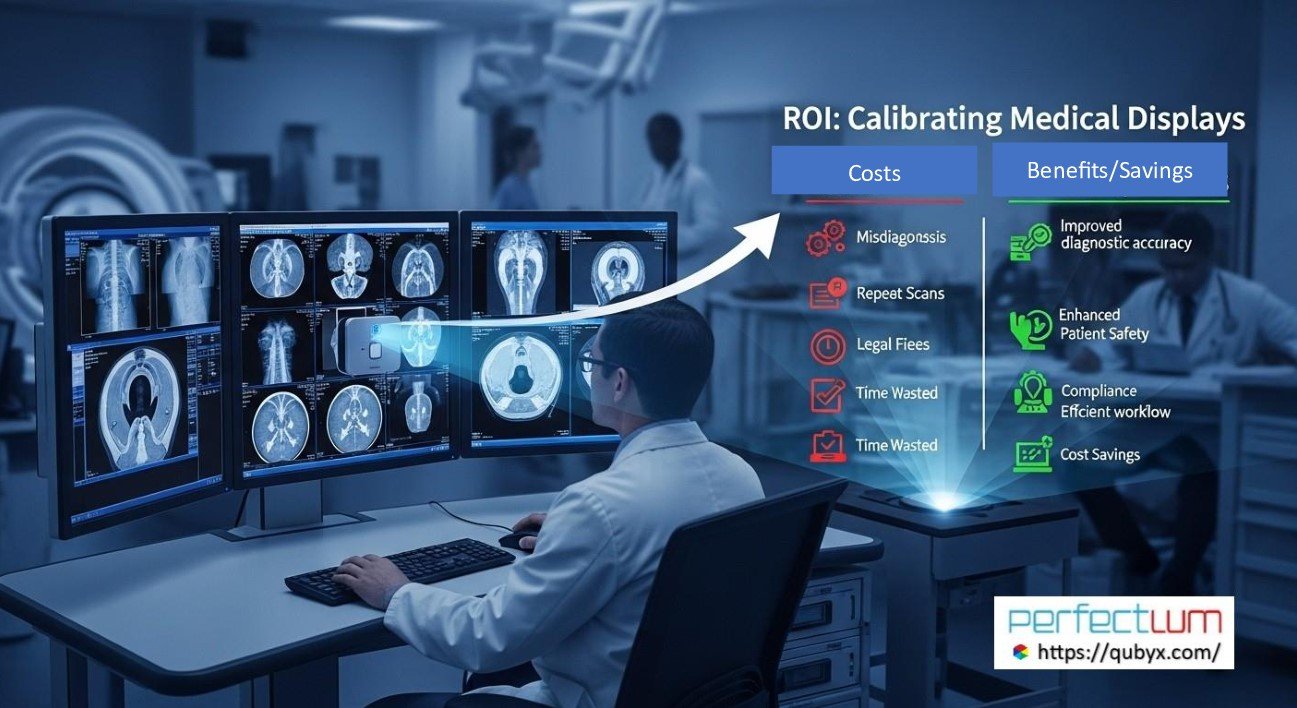

Medical Display Calibration ROI | Cost-Effective Radiology
- September 29, 2025
- Shamsul
Medical Display Calibration ROI | Cost-Effective Radiology
In healthcare, precision is paramount. The ability to accurately interpret medical images hinges on the quality and calibration of the displays used by radiologists and clinicians. The Hidden Costs of Uncalibrated Displays: Why Perfectlum is an ROI-Driven Investment and cost-effective radiology solutions underscores the importance of ensuring that medical monitors are correctly calibrated. While investing in high-quality display technology might seem costly upfront, the long-term benefits—both clinical and financial—far outweigh initial expenses. Healthcare providers aiming to optimize their diagnostic accuracy must recognize how uncalibrated monitors can silently undermine patient care and inflate costs. This article explores the profound implications of display calibration, emphasizing why adopting solutions like Perfectlum offers an effective, ROI-driven pathway to sustainable healthcare IT investments.
Understanding the Importance of Accurate Display Calibration in Healthcare
Accurate visualization of medical images is central to diagnosing, monitoring, and treating patients effectively. In radiology, where minute details can distinguish between healthy tissue and pathology, visual fidelity becomes the backbone of clinical decision-making. Proper calibration ensures that the colors, luminance, and contrast of displays are consistent with industry standards, enabling radiologists to detect subtle abnormalities confidently.
Failure to calibrate displays adequately can lead to misrepresentations of medical images. This lack of precision affects not only the immediate diagnosis but also influences subsequent patient management. It’s crucial for healthcare institutions to understand that calibration is not a one-time task but an ongoing process vital for maintaining diagnostic integrity. The evolution of imaging technologies and increasing regulatory demands make calibration even more critical in modern medical environments.
The Role of Visual Accuracy in Diagnostic Imaging
Diagnostic imaging, whether through X-rays, MRIs, or CT scans, depends heavily on visual cues to guide treatment plans. Visual accuracy isn’t just about making images look good; it is about faithfully reproducing the data that the imaging machines capture. A calibrated display ensures that every pixel reflects the true intensities and colors necessary for precise interpretation.
When displays are calibrated correctly, radiologists can distinguish between benign and malignant tissues more reliably. It allows them to detect great detail that might otherwise be lost under improper settings. Without this, subtle but critical variations in tissue density or contrast may go unnoticed, jeopardizing patient outcomes.
Consequences of Inaccurate Image Representation for Patient Care
Inaccurate image representation due to uncalibrated monitors directly impacts the quality of patient care. Misleading images can cause delayed diagnoses, unnecessary additional testing, or incorrect treatments. A palpable risk exists where false negatives may mean missed early signs of disease, while false positives can lead to invasive procedures that could have been avoided.
Beyond individual patient outcomes, poor calibration erodes trust in healthcare providers. Patients expect their caregivers to utilize the latest, most precise technology. Consistently inaccurate readings may lead to liability issues and legal complications for healthcare facilities, which can be costly and damage their reputation.
How Calibration Enhances Clinical Decision-Making
Calibration acts as the foundation for consistent and reliable image interpretation. When displays are calibrated regularly, clinicians can make more confident diagnostic decisions, knowing they are viewing images with accurate luminance and color fidelity. This consistency reduces interpretive variability, leading to more standardized patient care.
Robust calibration techniques also facilitate smoother workflow processes. When monitors provide truthful representations of images, radiologists spend less time second-guessing visual discrepancies and more time focusing on diagnosis and treatment planning. In turn, this boosts overall clinical efficiency and patient throughput. It is always suggested to use the PerfectLum as it is one of the reliable cost-effective radiology solutions.
The Risks of Using Uncalibrated Monitors in Medical Settings
Uncalibrated monitors introduce significant vulnerabilities into healthcare environments. Although sometimes overlooked, these risks are real and can have cascading effects on the quality of care, legal liability, and operational costs. Recognizing these dangers is the first step toward safeguarding diagnostic accuracy and optimizing healthcare IT investments.
Using uncalibrated displays risks multiple facets of diagnostic integrity and operational efficiency. The unpredictability of display performance can undermine clinical confidence, elevate error rates, and generate non-compliance issues with regulatory standards. As medical imaging becomes increasingly digital, the importance of proper calibration becomes undeniable. You employ PerfectLum, it is one of the reliable cost-effective radiology solutions.
Impact on Diagnostic Precision and Reliability
The primary concern with uncalibrated monitors is compromised diagnostic precision. Displays that have drifted from their optimal calibration settings can distort true image qualities, making it harder to detect pathology. This unreliability leads to diagnostic errors that directly affect patient care.
Moreover, inconsistent image quality between workstations hampers collaborative diagnosis. Radiologists might interpret consistent images differently based on their display’s calibration, creating discrepancies and confusion. The resulting variability diminishes overall diagnostic reliability and can slow down decision-making processes. You need to employ one the cost-effective radiology solutions.
Increased Error Rates and Misdiagnoses
Uncalibrated monitors are a significant contributor to diagnostic errors. Variations in luminance or color rendering can obscure subtle tissue differences, leading radiologists to overlook critical findings. Studies have shown that even small deviations can substantially increase false negatives or positives, with serious clinical repercussions.
These errors not only compromise individual patient outcomes but also inflate healthcare costs through additional tests, treatments, and legal litigations. As error rates climb, so does the risk of malpractice claims, legal liabilities, and financial penalties, pressuring healthcare institutions to prioritize calibration solutions. There is need to employ PerfectLum, it is one of the reliable cost-effective radiology solutions.
Regulatory Compliance Challenges and Legal Liabilities
Healthcare providers must adhere to strict standards concerning imaging and display quality, often dictated by bodies such as the FDA, IEC, and other international organizations. Uncalibrated monitors threaten compliance with these standards, exposing healthcare facilities to legal penalties and accreditation failures.
Regulatory standards mandate routine calibration and documentation of monitor performance. Neglecting these requirements can severely impair an institution’s credibility and legal standing. The cost of non-compliance extends beyond fines—it includes the potential loss of accreditation and increased scrutiny from oversight agencies.
Potential for Repeated Imaging and Additional Patient Exposure
When image quality is compromised due to uncalibrated displays, clinicians may order repeat imaging studies to confirm diagnoses or clarify ambiguous findings. Repeated imaging increases patient exposure to radiation, contrast agents, and other procedural risks, contributing not only to patient discomfort but also to institutional costs.
This cycle of retakes also strains imaging departments, causes workflow delays, and diminishes overall capacity. Proper calibration mitigates these issues by ensuring that initial diagnostic images are as accurate as possible, reducing the need for repeat studies. PerfectLum is one of the reliable cost-effective radiology solutions.
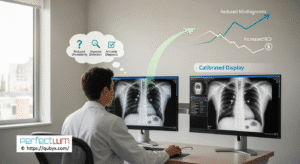
The Financial Implications of Uncalibrated Displays
Beyond clinical risks, uncalibrated displays carry a bundle of hidden costs that quietly drain resources from healthcare organizations. Recognizing and addressing these costs is essential for making informed healthcare IT investment decisions, especially when selecting cost-effective radiology solutions that deliver long-term value.
Most of these expenses are indirect but cumulatively significant. They include costs associated with error correction, workflow inefficiencies, and legal penalties. In essence, ignoring proper calibration can make an institution’s investment in medical imaging technology far less cost-effective than initially presumed.
Hidden Costs of Diagnostic Errors and Retakes
Diagnostic errors stemming from poor display calibration can lead to costly medical mistakes, including missed diagnoses or unnecessary treatments. These errors often result in additional procedures, extended hospital stays, or even legal action against healthcare providers.
Retaking images due to poor visualization not only delays patient care but also doubles imaging expenses. These costs are often hidden in operational budgets but can accumulate rapidly, ultimately exceeding investments in calibration technology. Addressing calibration proactively prevents such hidden expenses from eroding hospitals’ financial health. You need to employ PerfectLum software, it is one of the reliable cost-effective radiology solutions
Extended Workflow Times and Reduced Efficiency
Uncalibrated monitors challenge clinicians’ efficiency by forcing them to spend extra time verifying image quality or consulting additional sources to confirm findings. This inefficiency results in longer decreased patient throughput, which directly impact revenue streams.
The extra administrative and diagnostic time due to calibration issues reduces the capacity of radiology departments. Over time, this inefficiency can translate into significant financial losses, especially for high-volume healthcare settings that rely on rapid turnaround times. There is need to use PerfectLum software, it is one of the reliable cost-effective radiology solutions
Additional Training and Quality Control Expenses
Maintaining calibration standards requires staff training, ongoing quality control protocols, and periodic equipment upgrades. While these are necessary investments, they add to operational costs that can influence overall budget planning.
Inadequate calibration can also necessitate frequent re-calibrations and troubleshooting, adding to the workload of radiology technicians and IT staff. An effective calibration system like Perfectlum, it is reliable cost-effective radiology solutions and simplifies these tasks, reducing the need for extensive training and ongoing expenses.
Cost of Non-Compliance Fines and Penalties
Ignoring calibration standards can result in non-compliance fines depending on local regulations and accreditation requirements. These fines serve as a financial penalty for neglecting fundamental diagnostic quality standards, further affecting the bottom line.
Adherence to calibration standards is also crucial for insurance reimbursements and legal defenses. Non-compliance exposes healthcare providers to legal liabilities and financial penalties, emphasizing the importance of investing in reliable calibration tools that ensure ongoing compliance. To Avoid difficulties, you can use reliable cost-effective radiology solutions.
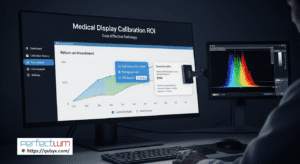

The ROI of Investing in Cost-Effective Radiology Solutions
Investments in calibrated solutions like Perfectlum are not merely about compliance; they translate into tangible benefits. An ROI-driven approach incorporates improvements in workflow, diagnostic accuracy, patient safety, and long-term cost savings. By understanding how calibration influences operational and clinical outcomes, healthcare providers can make smarter, more strategic healthcare IT investments.
The true value of calibration extends beyond the immediate visual fidelity of monitors. It encompasses workflow efficiency, patient safety, legal compliance, and institutional reputation. In the ever-evolving landscape of healthcare technology, investing in quality calibration solutions is an essential step toward future-proofing healthcare delivery. PerfectLum is one of the reliable cost-effective radiology solutions.
How Calibration Tools Improve Workflow and Productivity
Automated calibration tools like Perfectlum streamline the calibration process, ensuring consistent performance across all displays. This automation reduces manual intervention, minimizes human error, and speeds up setup times, allowing staff to focus on clinical tasks rather than technical troubleshooting.
Enhancing workflow with reliable calibration means faster image reviews, quicker diagnoses, and improved patient throughput. Over time, optimized workflow translates into increased revenue, reduced workload stress on staff, and higher satisfaction among clinicians and patients alike.
Long-Term Savings Through Reliable and Consistent Image Quality
High-quality calibration provides consistency that ultimately translates into cost savings. Consistent image quality reduces diagnostic errors, minimizes the need for repeat imaging, and enhances clinician confidence—all of which lower operational expenses.
Investing in advanced cost-effective radiology solutions like Perfectlum offers measurable long-term savings. These include reductions in malpractice liabilities, operational efficiencies, and compliance costs, making calibration an economically sound decision for healthcare organizations.
Enhancing Patient Trust and Institutional Reputation
Patients trust healthcare providers that deliver accurate diagnostics and prioritize safety. Consistently well-calibrated displays underpin this trust by ensuring every image viewed reflects true anatomy and pathology.
An institution’s reputation benefits from compliance with international standards and demonstrated commitment to quality improvement. Implementing reliable calibration measures enhances credibility and attracts both patients and healthcare professionals seeking high standards of care.
Future-Proofing Healthcare IT Infrastructure with Advanced Calibration Technologies
The rapid advancement in medical imaging demands adaptable, scalable calibration systems. Systems like Perfectlum are designed to evolve with new technologies, ensuring sustained compatibility with future devices and standards.
Investing in such solutions future-proofs an organization’s healthcare IT infrastructure, preventing expensive upgrades or replacements down the line. This forward-thinking approach aligns with strategic growth and ensures continuous diagnostic accuracy. PerfectLum as it is one of the reliable cost-effective radiology solutions.
Features to Look for in a Perfectlum Calibration System
Selecting the right calibration system is key to reaping the benefits. Features like precision, ease of use, compatibility, and robust support define the value proposition of any calibration solution. For healthcare providers, choosing a system that aligns with their operational needs maximizes ROI. PerfectLum is one of the reliable cost-effective radiology solutions.
A quality calibration system should deliver consistent results, be user-friendly, integrate seamlessly into existing healthcare IT environments, and come with comprehensive support. These attributes guarantee that calibration becomes a reliable, sustainable part of daily clinical workflows.
Precision and Consistency in Color and Brightness Calibration
Accurate calibration entails precise color and luminance matching that adheres to industry standards. Perfectlum’s advanced calibration algorithms ensure that each monitor precisely reproduces expected image qualities, regardless of ambient conditions or display aging.
Consistency is vital for multi-user environments where images are viewed across various workstations. A calibration system that offers repeatability and traceability minimizes discrepancies, fostering higher confidence in interpretations and reducing diagnostic errors. PerfectLum is one of the reliable cost-effective radiology solutions.
User-Friendly Interface and Ease of Integration
Healthcare IT environments demand intuitive solutions that can be quickly adopted without extensive training. Cost-effective radiology solutions, Perfectlum’s user-friendly interface simplifies calibration procedures, enabling staff to perform routine checks with minimal technical expertise.
Furthermore, seamless integration with existing systems, such as electronic health records (EHR) and PACS, ensures smooth workflow and centralized compliance documentation. This ease of integration maximizes the system’s value and encourages regular calibration practices.
Compatibility with Existing Healthcare IT Systems
Compatibility is critical for avoiding costly disruptions. A calibration system that supports a variety of monitor brands and models ensures that healthcare organizations can standardize calibration procedures across their entire infrastructure.
Ensuring interoperability with hospital PACS, HIS, and other clinical systems promotes consistency and facilitates comprehensive quality assurance processes. Compatibility also future-proofs investments as new equipment is added over time. PerfectLum is one of the reliable cost-effective radiology solutions.
Robust Support and Maintenance Services
Reliable support and maintenance are essential for sustained calibration performance. A vendor that offers ongoing training, software updates, and troubleshooting creates a long-term partnership that enhances system reliability.
Perfectlum’s comprehensive maintenance services and one of cost-effective radiology solutions help prevent calibration drift, ensure compliance with evolving standards, and extend the lifespan of display equipment, thereby protecting the organization’s investment.
Comparing Cost-Effective Radiology Solutions: Traditional vs. Modern Calibration Approaches
Different calibration methodologies vary significantly in terms of accuracy, efficiency, and overall ROI. Traditional manual calibration processes often require technical expertise and are prone to inconsistencies. Conversely, modern AI-driven calibration technologies streamline operations, improve precision, and adapt to changing display characteristics.
A thorough cost-benefit analysis reveals how investing in advanced calibration approaches like Perfectlum provides superior long-term value than outdated manual methods, ultimately aligning with the goal of cost-effective radiology solutions.
Manual Calibration Methods and Their Limitations
Manual calibration relies on periodic adjustments made by technicians using colorimeters or photometers. While seemingly inexpensive upfront, this approach is labor-intensive, subject to user variability, and often inconsistent.
Over time, manual methods may fail to maintain the necessary standards due to display aging or environmental changes. This inconsistency leads to compromised image quality, increased diagnostic errors, and higher costs related to re-imaging or legal liabilities. You need to employ one of the reliable cost-effective radiology solutions.
Automated and AI-Driven Calibration Technologies
Automated calibration systems like Perfectlum eliminate many limitations of manual procedures by continuously monitoring display performance and making real-time adjustments. AI-driven algorithms further enhance accuracy by adapting to the unique characteristics of each display.
These modern solutions significantly reduce calibration time and human error, ensure ongoing compliance, and improve diagnostic reliability and provide reliable cost-effective radiology solutions. Despite a higher initial investment, the long-term ROI is compelling due to improved efficiency and decreased error-related costs.
Cost-Benefit Analysis of Different Calibration Strategies
When evaluating calibration options, healthcare providers must consider not only upfront costs but also ongoing expenses related to accuracy, compliance, and workflow. Automated, AI-enabled solutions typically offer higher initial costs but deliver substantial savings over manual calibration through improved accuracy, reduced labor, and minimized error margins.
Adopting a comprehensive, efficient calibration technology aligns with the goals of cost-effective radiology solutions, providing fiscal prudence while enhancing clinical outcomes. It’s a strategic investment that pays dividends in operational excellence and patient safety.
The Role of Healthcare IT Investment in Enhancing Diagnostic Accuracy
Investing wisely in healthcare IT is essential for modern hospitals and clinics striving for excellence. Effective integration of calibration solutions into existing Electronic Health Records (EHR) systems, compliance frameworks, and scalable infrastructure ensures that diagnostic accuracy is maintained holistically.
A well-planned IT investment translates into operational efficiencies, regulatory compliance, and higher patient satisfaction. Leveraging advanced and cost-effective radiology solutions calibration technology like Perfectlum exemplifies how targeted investments can elevate overall healthcare delivery standards.
Integrating Calibration Solutions into Electronic Health Records (EHR) Systems
Seamless integration with EHR enhances traceability and documentation of calibration activities, facilitating quality audits and compliance reporting. Embedding calibration records directly into patient data streams streamlines workflows and ensures calibration status is always accessible.
This integration empowers healthcare organizations to maintain rigorous standards and demonstrate adherence to international standards during accreditation processes. It forms a critical component of a holistic, digital health strategy that emphasizes accuracy, safety, and accountability.
Data Security and Compliance Considerations
Calibration data handled within healthcare IT must be secure, accurate, and accessible only to authorized personnel. Ensuring compliance with data protection regulations such as HIPAA or GDPR is non-negotiable.
Modern cost-effective radiology solutions incorporate advanced security features and compliance tools, safeguarding sensitive information and providing clinicians with confidence that their diagnostic environment meets all legal and regulatory requirements.
Scalability for Growing Healthcare Facilities
As healthcare organizations expand, their IT infrastructure must adapt accordingly. Scalable calibration solutions accommodate increasing monitor inventories, new imaging modalities, and evolving standards without significant disruptions.
Investments in adaptable cost-effective radiology solutions calibration systems like Perfectlum support long-term growth strategies while maintaining diagnostic integrity. This proactive approach prevents the need for costly replacements or frequent upgrades, aligning with sustainable healthcare IT investment strategies.
Case Studies Demonstrating ROI through Proper Calibration
Real-world examples vividly illustrate how the right calibration solutions translate into tangible benefits. From hospitals reducing costs to clinics improving diagnostic accuracy, these case studies underscore the importance of investing in cost-effective radiology solutions like Perfectlum.
Such case studies serve as evidence-based proof that proper calibration isn’t an expense but a strategic investment into clinical excellence and operational sustainability.
Hospital A’s Implementation of Perfectlum and Resultant Cost Savings
Hospital A adopted Perfectlum’s advanced calibration system and cost-effective radiology solutions across its radiology department, leading to a 25% reduction in diagnostic errors and a 15% increase in workflow efficiency. The hospital also noted a significant decrease in re-imaging costs and legal liabilities.
The initial investment was recouped within the first year through savings on error-related costs and increased patient throughput. This case exemplifies how investing in a ROI-driven calibration solution enhances both clinical and financial performance.
Clinic B’s Reduction in Diagnostic Errors After Calibration Upgrade
Clinic B upgraded its monitors using an automated calibration system aligned with international standards. Post-upgrade, diagnostic confidence improved markedly, and fewer cases required re-evaluation or follow-up imaging.
The reduction in diagnostic errors translated into better patient outcomes and higher clinic reputation. The cost savings generated by avoiding misdiagnoses and legal risks underscored the value of cost-effective radiology solutions that prioritize accuracy and reliability.
Comparative Analysis of Pre- and Post-Calibration Performance Metrics
A detailed performance analysis demonstrated that calibrated displays improved image contrast resolution and luminance uniformity, leading to more accurate diagnoses. Error margins decreased by over 30%, and workflow times shortened significantly.
Metrics such as error rates, workflow efficiency, and patient satisfaction scores consistently favor organizations that invest in reliable calibration systems, illustrating the long-term ROI achievable with modern solutions like Perfectlum.
Best Practices for Maintaining Calibrated Displays in Healthcare Facilities
Ensuring continued calibration accuracy requires a structured approach. Establishing routine schedules, staff training, and quality assurance processes is vital to sustain the benefits of calibration over time. These practices embed calibration into daily workflows, turning it into a standard operational element.
Healthcare facilities that commit to these best practices with cost-effective radiology solutions will enjoy lasting improvements in image quality and diagnostic confidence, reinforcing the clinical and financial benefits of their initial investment.
Routine Calibration Schedules and Protocols
Regular calibration ensures that displays remain within specified standards despite aging or environmental changes. Establishing clear protocols—such as weekly or monthly calibration cycles—helps maintain consistency.
Automated systems or software solutions like Perfectlum facilitate adherence to these schedules, reducing reliance on manual checks and minimizing the risk of calibration drift. Documenting calibration activities also supports regulatory compliance and quality assurance.
Staff Training and Skill Development
Properly trained staff are essential for effective calibration and troubleshooting. Educational programs should cover calibration principles, system operation, and troubleshooting procedures to empower technicians and clinicians.
Ongoing training updates staff on new standards, tools, and techniques, ensuring calibration processes remain current and effective. Well-trained personnel significantly reduce errors and maximize the benefits of calibration investments.
Monitoring and Quality Assurance Processes
Implementing monitoring protocols—including regular audits, statistical performance metrics, and automated alerts—helps detect calibration issues early. Continuous quality assurance ensures that displays consistently perform to specifications, minimizing clinical risks.
Integrating these processes into hospital accreditation and compliance workflows demonstrates a commitment to excellence and maintains high standards for diagnostic imaging environments. PerfectLum is one of the cost-effective radiology solutions.
Regulatory Standards and Accreditation Requirements for Display Calibration
Compliance with international and local standards is non-negotiable in healthcare. Proper calibration aligns with regulatory mandates that safeguard patient safety and ensure diagnostic accuracy. Staying ahead of these standards involves understanding certification processes and ongoing documentation.
Adherence to evolving industry standards is essential for maintaining accreditation, securing reimbursements, and avoiding penalties. Employing a calibration system like cost-effective radiology solutions, Perfectlum streamlines compliance and simplifies certification documentation.
Compliance with International and Local Regulations
Standards such as IEC 60601-2-45, DICOM, and ACR guidelines specify image display performance requirements. Healthcare providers must ensure their monitors meet these standards to deliver safe, effective care.
Local regulations may impose additional calibration and testing requirements. Staying informed and aligning practices with these regulatory frameworks minimizes legal and financial risks, and positions organizations as leaders in quality care.
Certification Processes and Documentation
Obtaining certification for display calibration involves rigorous testing, documentation, and periodic re-evaluation. Reliable calibration systems provide automatic logs and reports, simplifying these processes and supporting audit readiness.
Maintaining comprehensive records demonstrates compliance during inspections and helps in accreditation. Digital documentation from calibration systems like cost-effective radiology solutions Perfectlum ensures transparency and traceability, vital components of high-quality healthcare operations.
Staying Ahead of Evolving Industry Standards
The landscape of healthcare standards continuously evolves, often becoming more stringent. Investing in adaptable calibration solutions ensures the ability to meet future requirements without costly overhauls.
Proactive compliance management fosters continuous improvement, instills confidence among regulatory bodies, and ultimately safeguards patient safety while reinforcing institutional credibility in a competitive healthcare environment.
Conclusion
The hidden costs of uncalibrated displays in healthcare—ranging from diagnostic inaccuracies and legal liabilities to operational inefficiencies—highlight the critical need for consistent, precise calibration of medical monitors. Investing in innovative, cost-effective radiology solutions like Perfectlum delivers multifaceted benefits: improved diagnostic confidence, reduced error rates, cost-effective radiology solutions, compliance with stringent standards, and long-term financial savings. By prioritizing calibration as a core element of healthcare IT infrastructure, organizations can ensure better patient outcomes, uphold regulatory standards, and achieve a compelling ROI. As imaging technology advances and regulations tighten, embracing reliable calibration systems is no longer optional but essential to maintaining excellence in modern healthcare delivery.
Elevate Your Standards with PerfectLum Remote
Tags:
uncalibrated displays in healthcare, hidden costs radiology, cost-effective radiology, medical monitor calibration, display calibration healthcare, diagnostic accuracy imaging, cost-effective radiology solutions, healthcare IT investment, PerfectLum calibration software, ROI in radiology, medical imaging compliance
Related Posts
- December 4, 2025
- News
The Future of Color Science: Open-Source LUT Engines by QUBYX
- December 3, 2025
- News
How to Build a 100% QA Compliace Workflow for Radiology
- December 1, 2025
- News
How QUBYX OS Tools Deliver Next-Level Color Consistency The Hidden

